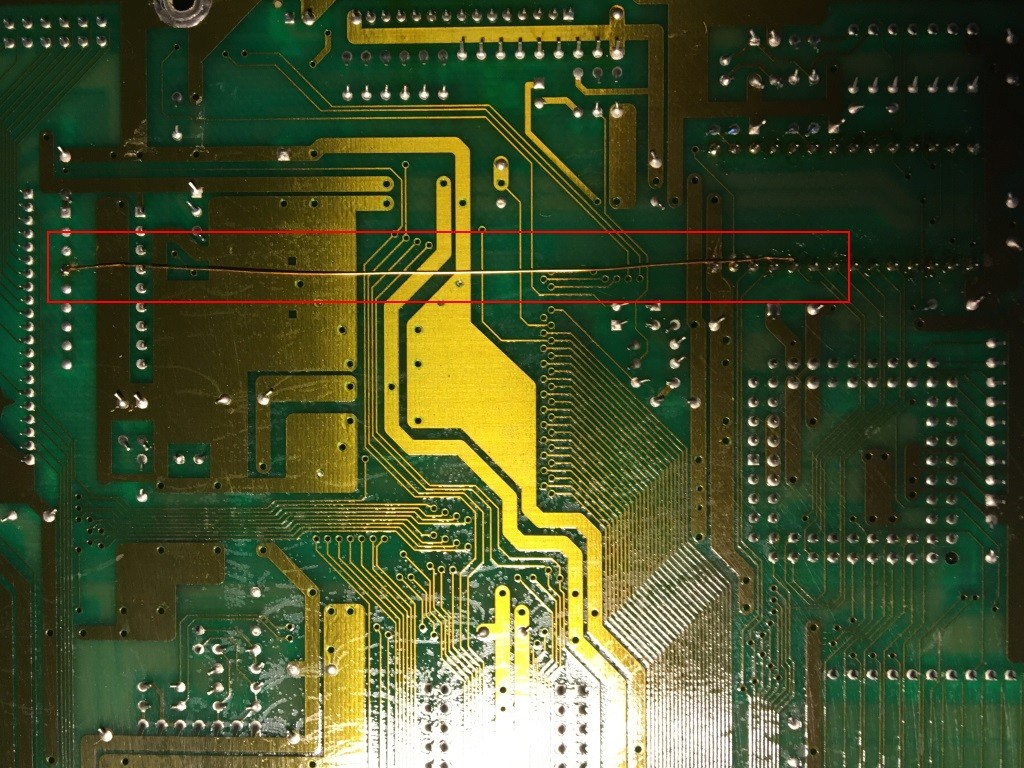Do you also have the problem that sometimes the an oscillator of your Behringer Neutron is out of tune when you bypass its tune pot?
I had that a couple of times now and didn´t know what to do about it until today.
I assumed being driven by 3340 ICs the Neutron would not need any warm up time but maybe I am wrong. However during boot the Neutron calibrates the OSCs internally. I found that when you lock a Tune pot and the corresponding oscillator is out of tune thereafter, you should switch power off and back on so to force re-calibration. Mine was perfectly in tune after having done so.
Category Archives: Synthesizer
Poly-61 repair
Ressurection of a Poly-61
Like some other 80´s polysynths with memory, many of today´s Poly-61s suffer from battery leakage. The problem for most owners without knowledge of the technicalities is that the symptoms come on slowly and do not neccessarily hint at memory. While leaking, the battery may still provide enough power to retain memory while starting to damage the PCB area around it. The device starts acting weird up to doing nothing at all soundwise. The symptoms depend a little on how the synth has been stored and therefore how the acid flowes across the board. If you see a Poly-61 on the used market described as ‘functional’ but ‘holding a steady tone’ it´s most likely a battery dammage.
I purchaised such a unit with the risk of not knowing the exact amount of dammage it had taken. But I was determined to make it fully operable again. After all I thought it couldn´t be worse than the Opera-6 fix.
Continue reading
BCR2000 Resource Pack for KORG M1
![]() BCR2000_KORG_M1.zip
BCR2000_KORG_M1.zip
KORG M1 has different parametersets for single and double mode. This pack only supports double mode patches!
BCR2000 Resource Pack for KORG DW-8000
S-330 Sampler Repair
I recently bought two Roland S-330 Samplers from a fellow musician at a synthesizer meeting for a reasonable price. Two things made me take them: Firstly, I´ve never owned a Roland S-series sampler and secondly one of them was declared defective. So that rose my ambition to get it fixed. And oh was I surprised about what was the cause of the error!
The previous owner told me that, when switching the unit on, the only thing happening was the LED of the disk drive lighting up. My initial thought was well, at least it still does something, so it can´t be too bad…
Checking it myself I also noticed that the Roll button LED was blinking very fast, and it was not a random flicker. It looked more like a clock-driven reset. My first assumption was that many times there is something wrong with the power supply, in a manner that, at a certain point of the boot process, the unit would draw so much current that a defective PSU would drop in voltage, thus causing a reset and put the unit into an infinite loop. So I was getting ready to recap the PSU but all voltages measured just fine, even under load. Also, all parts really looked okay, so it had to be something else.
So I dismounted the mainboard, performed a visual check of the top side and everything looked fine. Then I flipped it around to check for dull solder pads. And it was not very long until I discovered this:
If you find it hard to locate it then maybe beauce someone used a blank piece of wire to bridge two points on the board. It was drawn between a pin of the floppy controller to an output of a transistor array. Maybe some kind of pull-up hijacking to fix an unreliable DMA controller. To be honest I did not investigate any further, because it was quite obvious that blank wire across the mainboard touching at least four other pins that where most likely not meant to be part of the equation would cause some sort of trouble… I could imagine that at the beginning this wire was arranged in such a way that it didn´t touch any other pin, but eventually did so, caused by bumps or similar movement. I really can´t believe that someone did this and then said ‘well, I tried something but it didn´t work’!
So at the end a simple fix. Replaced the short-cutter with an isolated wire and, surprise surprise… a working unit! And this one is even in better condition than the unit that was working all along, and to no surprise. Probably the faulty unit has been sitting in a rack unused long enough to prevent some parts from wearing out. The display is still bright like on the first day and the disk drive runs smoothely compared to the ‘ever working’ unit.
But I´m not going to stop here. I am planning on getting one of these MSX to USB adaptors for easy control of the unit. And also there is a schematic for a Roland DIN to VGA adaptor (Roland RGB-25I adaptor cable), so I want to try that out and see if I can hook the unit up to a standard flat screen.
